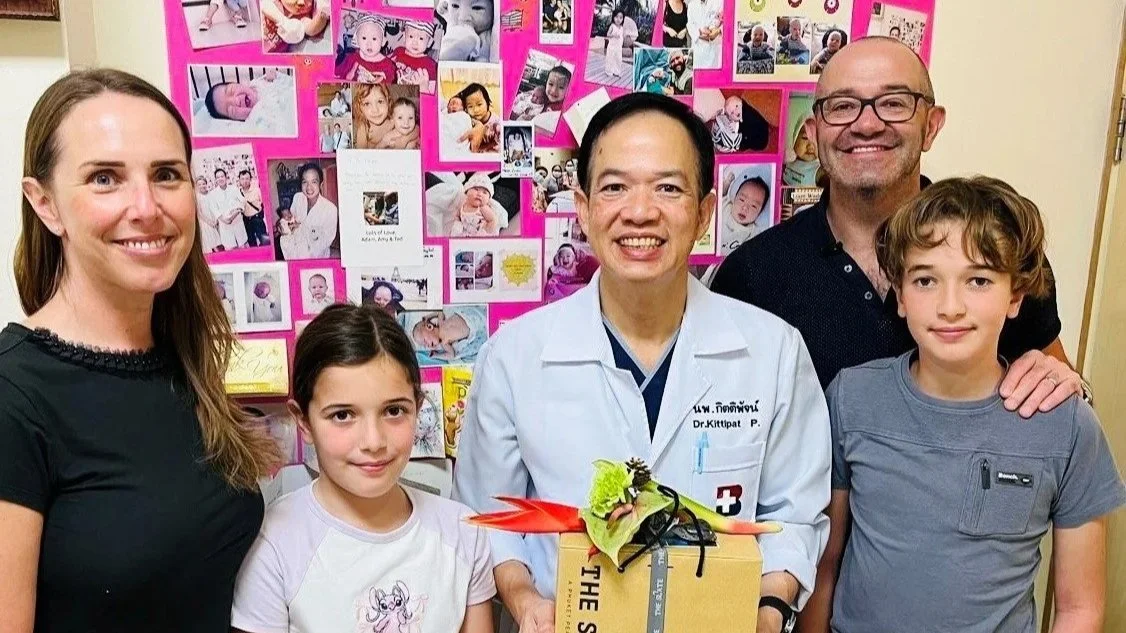Our Fertility Journey: The Story Behind Fertility Talent
This wasn’t a story we used to tell. It’s one of the hardest chapters in our lives, four years filled with heartbreak, anxiety, and loss. But it’s also the story of how we found hope, how we became parents, and how our personal journey deepened our commitment to the fertility sector. We were already recruiting within this space through Stroud Resourcing, but our experience gave us the drive to create something more focused, something dedicated solely to supporting this remarkable industry. That’s what led to the birth of Fertility Talent.Today, it’s a story we share openly with clients, candidates, and colleagues at Fertility Talent. Because behind our business is a deeply personal reason for doing what we do.
The Start of Our Journey
Like thousands of other couples in the UK, we struggled to have children for many years.
In 2011, we experienced our first pregnancy. The joy was indescribable but just six weeks later, we had our first miscarriage. It was one of the most painful experiences we’ve ever been through. What made it even harder was the silence. Pregnancy loss isn’t often spoken about, and we felt isolated and alone.
Each time we conceived again, hope returned but it came hand-in-hand with fear. We were constantly waiting for bad news. And over the years, that news came three more times. Every loss chipped away at our strength and our optimism.
We tried everything, lifestyle changes, supplements, private scans, anything that could improve our chances. But every time, we ended up devastated.
The Breaking Point
Our third pregnancy ended in a missed miscarriage following the first trimester. We’d had regular scans and Joanna was visibly pregnant. Learning we had lost the baby was a horrible shock. Chromosomal testing revealed no abnormalities - our baby had been a healthy girl. The grief was overwhelming, especially with no answers.
In 2013, we miscarried for a fourth time. Emotionally and physically exhausted, we booked a holiday to Thailand to process what had happened. But just before leaving, Joanna began experiencing abdominal pain. We feared an incomplete miscarriage.
At the hospital, we had to fight for a proper scan. A transabdominal ultrasound was performed, and we were told everything had passed. We requested a more accurate transvaginal scan, but it was refused.
While trekking on a remote Thai island, Joanna collapsed. The pain was unbearable. We discovered she had suffered a ruptured ectopic pregnancy, a life-threatening emergency. She was rushed on a four-hour ambulance journey to Bangkok Phuket Hospital, where emergency surgery was performed by Dr Kittipat Pongpech to remove her fallopian tube.
We were traumatised. And we truly believed our dream of having a biological family was over.
Finding Hope
Despite everything, which included Joanna suffering from PTSD and procedural memory loss, we didn’t give up. We began exploring adoption, then came a turning point, we were referred to Dr Siobhan Quenby at Warwick University Hospital, a specialist in recurrent miscarriage.
Speaking to her was a revelation. We realised we weren’t alone. There was research, there were trials, and, just maybe there was hope.
Although extensive testing revealed no clear cause, Dr Quenby refused to let us give up. She helped us access clinical trials, including:
The SiM trial, which involved “scratching” the womb lining to promote implantation
Treatment for Chronic Histiocytic Intervillositis (CHI), a rare condition where the body fights pregnancy
These were difficult decisions. We had already endured so much. But we believed in the possibility of a different outcome.
After the SiM trial, medication was used to improve Joanna’s womb lining. Once we conceived, she was given steroids to suppress the immune response, and heparin to thin the blood. The medication was stopped after the first trimester, and for the first time in years, we allowed ourselves to hope.
At around 20 weeks, we were given some amazing news – we were through the riskiest part of the pregnancy, and our baby was healthy! We never felt such a wave of relief, before or since. We were thrilled, and although still worried about what might happen, we were told we should begin thinking about names. We named our unborn son Rory; we spoke to him every day and watched the baby bump grow with nervous anticipation.
On 27th May 2014, Rory was born by planned caesarean section (he was breech!). Two years later, under the same treatment plan, our daughter Matilda was born via emergency caesarean. Despite the complications and Joanna suffering PTSD and procedural memory loss, our children were here, and they were perfect.
After their births, we sent photographs to Dr Kittipat Pongpech, filled with gratitude. His great skills not only saved Joanna’s life but protected our chance of becoming parents. We had a promise then that one day we would return to thank him in person.
In 2025, on Christmas Day, that promise was finally fulfilled. We returned to Bangkok Phuket Hospital to see Dr Kittipat again, with Rory now 11 and Matilda 9. Standing together so many years later was deeply emotional and a powerful reminder of how close we came to losing everything.
We were advised not to try for more children due to the risks. We’re at peace with this. We feel incredibly lucky to have Rory and Matilda. They are everything to us.
The People Who Made It Possible
There were key individuals who made this outcome possible.
Dr Kittipat Pongpech, the surgeon in Thailand, performed laparoscopic surgery during Joanna’s ectopic rupture, minimising complications and scarring despite the emergency.
Dr Siobhan Quenby and her team gave us not just treatment, but compassion, understanding, and hope.
During both pregnancies, reassurance scans helped us cope with anxiety. Every gesture of care made a difference.
















